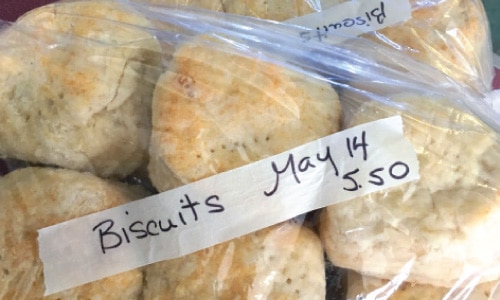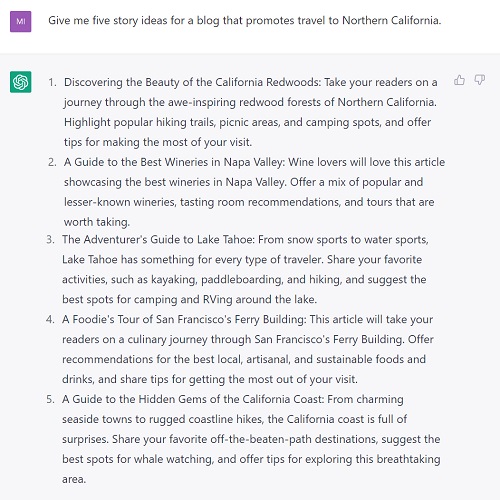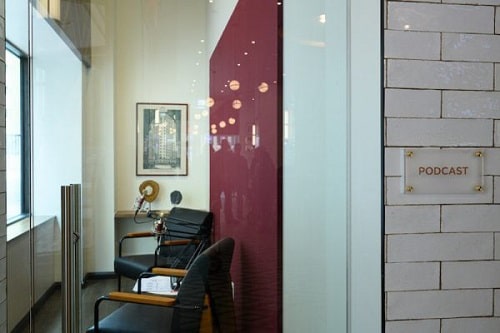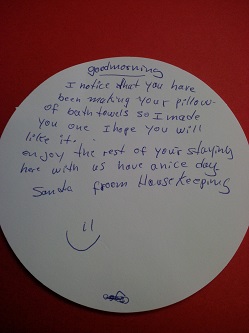While Aesop had his legendary fables and their educational morals (I mean…who doesn’t know The Tortoise & The Hare?), hospitality marketers can learn from these five real-life stories and their marketing morals. Behold: The County & The World Cup, The Surgeon & The Flowers, The Meerkat & The Photographer, The Front Desk & The Dumb Answer, and The Biscuits & The Masking Tape.
The Country & The World Cup

The morning that Australia was playing England in the semifinals of the 2023 FIFA Women’s World Cup, these full-page ads appeared in England’s newspapers. BEFORE the match was played. Why is that so cool? Because it’s pretty likely all of football-crazed England was thinking about Australia that morning (and not in a good way), and the message is just cheeky enough to earn the respect of that crowd. Had Tourism Australia placed an ad AFTER the match…what could they really say that would be clever and make people care about them? Win or lose, any post-game messaging would be likely to fall flat. And in fact, if Australia had lost (which they did), the messaging opportunity would really disappear: once that match was over, all England cared about was Spain, their next opponent in the upcoming final match. All thoughts of Australia were in the rear view mirror.
The Moral of this Marketing Story? Timing is everything in marketing. A message can lose its power – or worse, cause harm – if not perfectly timed. For more tips on this, see these four character traits that foster good timing in marketing.
The Surgeon & The Flowers

This story may not come from the hospitality industry, but it sure feels like it does. Someone close to me recently had cataract surgery and was referred to ModernEyes Ophthalmology. Every touchpoint with this office was fabulous, from intake and testing to exams and scheduling. It seems like there are hundreds of people working there, and yet we never felt like a number during our visits. Random technicians said hello to us in the hallways, staff remembered our names at every visit, and everyone was ALWAYS cheerful and upbeat. So we loved them from the start…and we got used to it. It was something we appreciated, but it’s not like you walk around telling everyone you know about your eye doctor. Until we arrived at the office for the first post-surgical checkup…and were given flowers to wish the patient a speedy recovery. WTF? What doctor does that? Next thing you know, we’re literally telling everyone we know that that surgeon cares enough to give patients flowers after their surgery.
The Moral of this Marketing Story? Shock even your happiest of guests with something completely unexpected and you will instantly transform them into proactive ambassadors. Whatever investment you make in this arena is worth it and then some. For more inspiration, check out these 10 unexpected (and fabulous) tourism guest service stories.
The Meerkat & The Photographer
The London Zoo recently got fantastic global press coverage for its annual animal weigh-in. Now let’s face it…checking weights of animals is a mundane behind-the-scenes operational process at a zoo. It’s not the kind of hook PR folks would normally reach for, favoring “sexier,” more newsworthy hooks like bold new exhibits, renovations, expansions, and such. Yet, if you stop and think about it, how DO you weigh exotic animals like Squirrel Monkeys, Walking Stick Insects, Sumatran Tigers, and other animals – like Frank the Meerkat above (credit: AP News) – who aren’t likely to cooperate? It’s something non-zoo people have likely never considered. All that was needed to turn this story into media catnip were arresting photos and adorable videos. And take special note: a meerkat on a scale is cute. A meerkat on a scale peering over a clipboard – which implies mischief and is an unexpected action for a meerkat – has news potential.
The Moral of this Marketing Story? There are actually two here. 1) If you have no sexy or big news to share, look at your operational processes and annual checklists. “How we do (this)…” stories, when showcased right, could be made interesting to non-hospitality folks. 2) The right images can turn even the most mundane of happenings into something newsworthy. Invest the time and labor to get it right, whether that means arranging for a high-profile media photographer to come shoot (as the London Zoo did with Associated Press) or hiring your own professionals to secure the shots. For more tips on this, check out what makes a dramatic tourism marketing photo and the secret to a great tourism photo.
The Front Desk & The Dumb Answer
While I have no desire to bash hotels by name, I’d be remiss not to share their mistakes as a learning opportunity for others. When I was checking into a Santa Monica based hotel at 5pm – well after check-in time – there was some sort of issue going on because my room wasn’t ready. And it was clear to me that the front desk staff was all in a tizzy about it. I’m one of the world’s most easygoing travelers, but having just landed on a cross country flight from NYC to CA, I was naturally eager to check into my room and refresh. So I simply (and calmly) asked when my room would be ready. This incident was perhaps a decade ago and yet I will never ever forget the front desk agent’s response: “Ma’am, too many of our guests requested a late checkout so you’re just going to have to understand and be patient. We’ll let you know as soon as housekeeping can get to it.” That is VERBATIM what she said to me. Whether it was true or not, it was truly the dumbest answer possible. Telling one guest she’ll “just have to understand” that due to the hotel’s own poor operational planning, her own standard expectations are being sacrificed so other guests can get special treatment? Not cool. It was just salt in the wound that the room ultimately wasn’t ready until 6pm, and worse that they didn’t even offer me a complimentary snack/drink in the lobby lounge restaurant while I was forced to wait. This was a four-star hotel brand and while such a response may have come just from that one person on that one day, I never stayed in a hotel of that brand again. And while my position in the tourism industry makes me unwilling to bash hotels online publicly by name, I did tell several of my personal friends and family the story (by name). Imagine if I were just a “regular” guest? Tripadvisor, here I come.
The Moral of the Marketing Story? Train your staff to graciously handle curve balls and crises because if you don’t, it will become a marketing problem. Something similar happened with these chocolate chip cookies at a Turks & Caicos resort.
The Biscuits & The Masking Tape

At Anchors Away, a small family-owned restaurant and dairy bar in Clyde River, Nova Scotia, the biscuit packs sold in bags at the front counter are labeled with masking tape and handwritten marker. While I was there helping the owner with a business and marketing strategy as part of a government tourism program, she apologized for the homegrown approach and said she was planning to invest in a label maker so the packages would look more professional. Now, this is a restaurant that doesn’t even have a website and whose entire operation – from staffing and menu choices to processes and marketing – is homegrown. Professional looking labels would be SO out of place here. And in fact, handwritten labels on a package of homemade biscuits are absolutely PERFECT for their branding…and sets them apart from the chain grocery store up the road.
The Moral of the Marketing Story? “Branding” doesn’t mean “fancy” or “formal.” Branding means making sure that every touchpoint a guest has with your operation feels authentically “like you.” Read the whole biscuit story here.
And now that you’ve enjoyed five real-life stories and their marketing morals, go indulge your inner child with a revisit of some of Aesop’s most legendary fables and their morals.
 get travel marketing tips
get travel marketing tips 
































